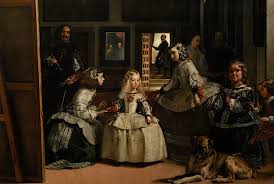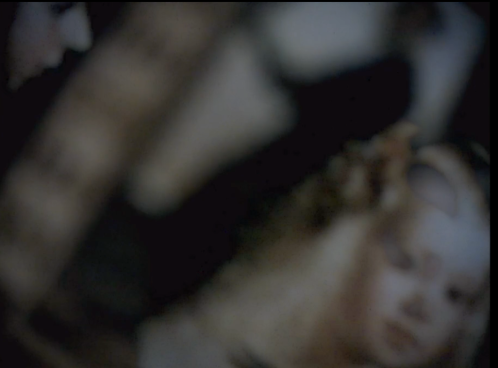Foucault’s Double video artwork

This artwork of mine explores notions of family, legacy and looking, in Diego Velázquez’s painting Las Meninas (in the Prado Museum)
 .
.
The painting is a curious mixture of shifting reference points where the subject and viewer swap places ‘infinitely’ as they observe the painter watching them, watching the princess and her courtiers, while her parents form a ghostlike image caught in a mirror behind them, perhaps observing all. For me this picture also points to the replacement of parents by their offspring and foretells our/their mortality.
The work utilises a chapter by Michel Foucault from his book The Order of Things to form the basis for a discursive script. The Foucault essay discusses the painting from a non-art historical perspective relating what is being observed in the collection of figures to the position of the viewer. I have précised the chapter and found better words from those in the standard translation from French to English to provide better understanding.
As a counter point to the narration, I have interwoven sections from the last interview Foucault gave shortly before his death. In this interview he discuses the role of the philosopher in relation to politics. His statements are more confrontational and I hope by using them that they yank the listener back into the here and now and out of the realm of the painting. The combined text has then been broken up to form a three voice script which tries to capture the oscillation been viewing perspectives which is evident in the painting.
For the visual element of the work I have filmed the painting with a microscope camera, moving it around the composition much they same as our eyes move around an image. The places it alights are random and flit back and forth to anchors or common reference points. The resulting images are layered to provide occasional synergy with the narration, but not so much that it becomes a close confluence of word and image – that would be too literal. Rather, the discontinuities allow new conversations to occur in the mind and eyes of the viewer.
The voices I used were a poet, Christopher Hamilton-Emery, who has a lovely Manchester accent, a singer and actor, David Morris-Johnston, and my own. (The other voice I wanted was not available on the day of the recording.) The recording was done at the same time for all parts so that the same ambience was consistent throughout the audio. The differences in light and shade between the voices is hoped to provide the listener with variety and to develop the energy sometimes lacking from a one-voice script.
My use of non-literary words is an attempt to fuse the lecture and the documentary into a new form of artwork. By combing them in what I call the docu-lecture, I try to tease out additional meaning in a mixture of text and image. This hybrid art form is for me still a work in progress. I welcome any comment and feedback. (I began my exploration of its potential in my artwork film – The Lecture as Palimpsest – https://vimeo.com/138198229 where I took a lecture by the former spy Anthony Blunt mixed it with a statement he gave to the press when his past actions as a spy became public.)